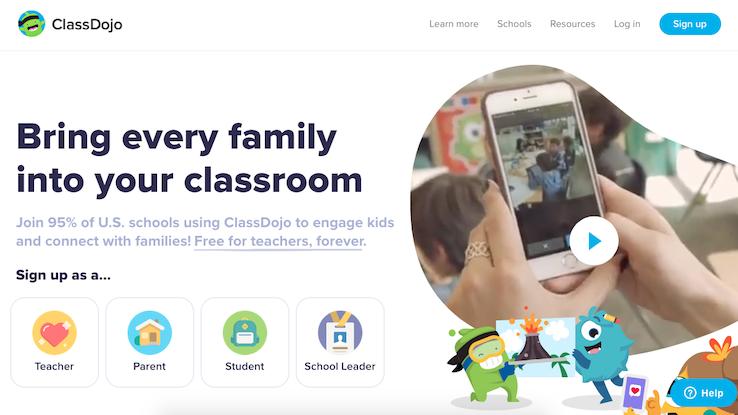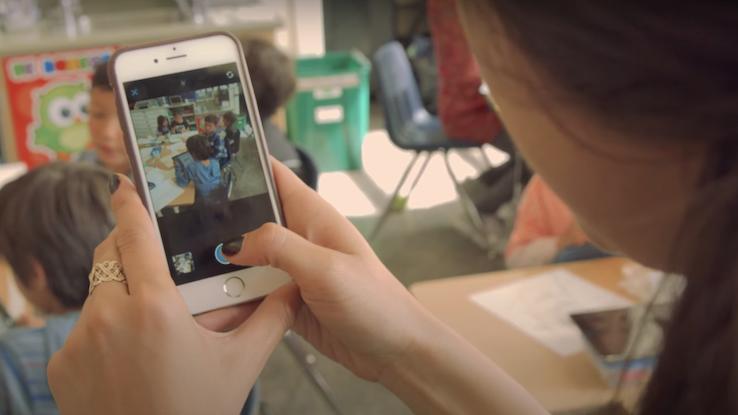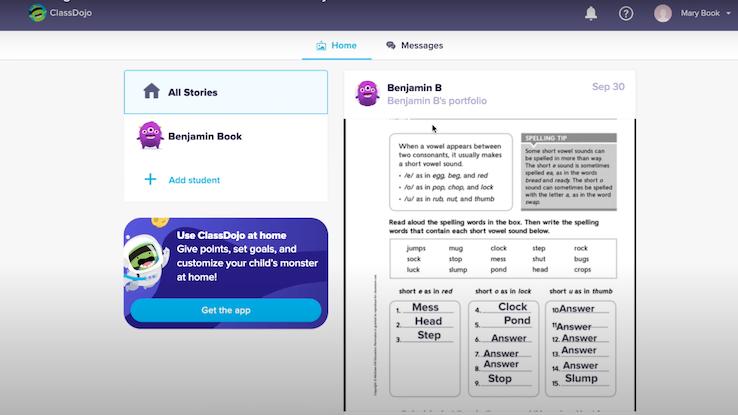Inside Out and Back Again Teacher Guide

ClassDojo is a digital application that educators tin use to encourage positive behavior and improved education outcomes for students. The main premise of the app is to facilitate more directly communication between educators and parents via a system they can utilise to directly message one another. Teachers tin can as well employ ClassDojo to send parents photos of students and reports near their behavior and performance in the classroom.
ClassDojo is advertised as an constructive means of changing kids' behavior at school. Students can sign up for their own ClassDojo accounts and create their own digital portfolios where educators can leave rated "Dojo Points" based on classroom beliefs. It sounds similar an innovative way to go on parents and teachers informed. Simply, is the app creating more work for anybody using information technology? Acquire more near ClassDojo, along with what both parents and educators have had to say about it, to better understand its benefits and potential disadvantages.
How Does ClassDojo Work?
If your child's school or teacher uses ClassDojo, at the beginning of the year you'll receive instructions on how to download the app, sign up for an account and log in. Teachers can choose a variety of core values they want to reinforce in their classrooms and can customize each period with different skills they want individual classes to larn. Some of these values include helping others, staying on task, participating, persevering, engaging in teamwork and working difficult.

Educators can too determine skills and values private students may need piece of work on. These "needs piece of work" values include disrespecting others, not turning in homework, getting off chore, talking out of plough and existence unprepared.Teachers can adjust these settings to reflect the needs of different form levels and abilities, but these are the standard "values" ClassDojo is set to focus on.
Each student creates their own profile in the app, called a digital portfolio, that'due south continued to the participating classroom. During grade, teachers assign students "Dojo Points" based on their behavior. If a child does well in 1 of the cadre values, they receive one positive Dojo Indicate. If they talk out of turn or are off task, they receive a negative Dojo Point. Parents tin review this information in the app to come across feedback about their children's operation and theoretically learn more most their kids' behavioral needs.
According to reviews posted on Capterra, a website that helps businesses and others discover ideal software programs for various needs, a number of educators and teachers praised ClassDojo and did not indicate that they felt it was causing them "more piece of work." For teachers who are used to using online or electronic formats for course, ClassDojo is intuitive to utilize and an like shooting fish in a barrel, organized fashion of tracking behavior patterns. Reviewers noted that it simplifies the process of rewarding good behaviors and provides incentives kids discover motivating.

Teachers also institute it was an easier way to communicate between school and home if in that location was a behavioral problem inside the classroom. Many teachers using education technology website EdSurge said they used ClassDojo every day and rated it v out of five stars.
On the flip side, some educators reviewing the app noted that it's not very effective for helping students in junior high and high school classes. They found that the process of using the app to actually award Dojo Points in real time wasn't every bit fast as they would've liked, which isn't necessarily an indication that the app creates more work merely that it takes up extra time. Some educators also didn't similar that parents treated the in-app messaging as a substitute for in-person communication.
What Exercise Parents Think of ClassDojo?
In Capterra reviews, parents didn't seem as fond of ClassDojo every bit educators. Some parents pointed out that their children received too many negative Dojo Points and not enough positive ones, arguing that this negative reinforcement is non always the best fashion to reinforce a modify in behavior. Also, parents are non always addicted of being taxed with downloading yet another app or plan at back-to-school time and having to acquire how to employ information technology.

In homes without steady cyberspace admission, parents could easily miss out on information teachers communicate via the app just neglect to mention in person. Some reviewers were as well concerned that teachers were spending more grade time adding data to ClassDojo when they should've been focused on working with the kids face to face.
For parents of elementary and preschool children, ClassDojo may be more work for the parents than for the teachers, who may take an existing level of familiarity with digital education tools like this one. Also, at that place are privacy concerns with ClassDojo. While the developers say that children's data is not being used, Common Sense Education did point out some privacy concerns, maxim that users tin can freely interact with other unrestricted users (pregnant that children may potentially chat freely with others), and that personally identifiable information is collected and oft uploaded, which does cause privacy concerns. While this may be rubber, information technology makes some parents feel uneasy.
Source: https://www.questionsanswered.net/lifestyle/is-class-dojo-more-work-for-teachers?utm_content=params%3Ao%3D740012%26ad%3DdirN%26qo%3DserpIndex
Post a Comment for "Inside Out and Back Again Teacher Guide"